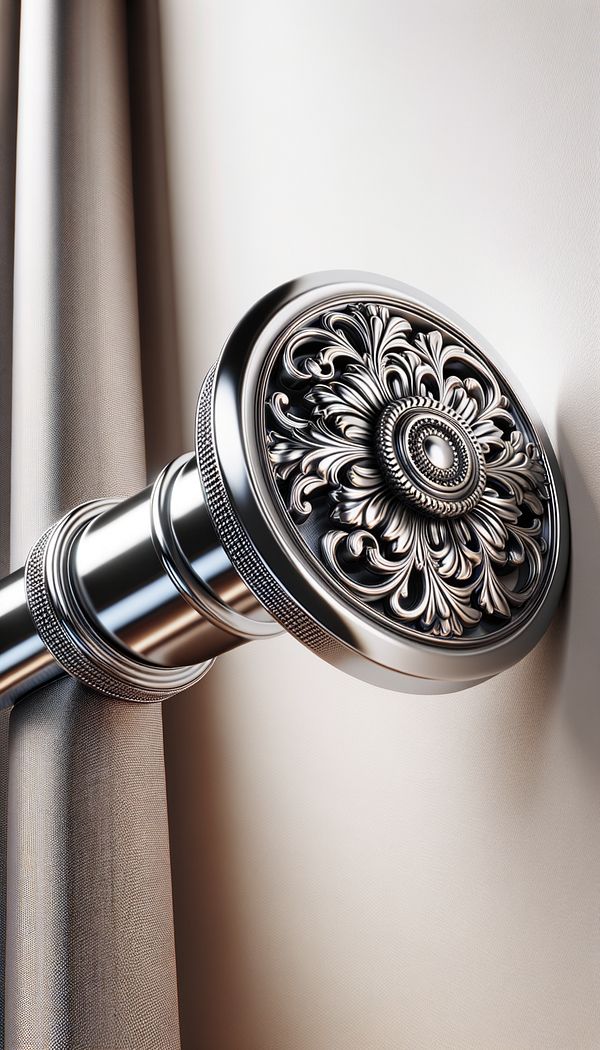What is a Flange?
A flange is a projecting flat rim, collar, or rib, usually used for strength or for attaching to another object.
Description
In the realm of interior design, a flange refers to a decorative or structural element that features a flat rim, collar, or rib, and serves several purposes including providing strength, stability, or as a means of attachment. While often found in industrial and mechanical contexts for securing pipes or steel beams, flanges in interior design are usually associated with decorative hardware, furniture, lighting fixtures, and drapery rods.
Decorative flanges can be crafted from a variety of materials including metal, wood, or plastic, and often feature intricate designs to add aesthetic appeal to a piece of furniture or hardware. From a functional perspective, flanges are key in ensuring that fixtures, like curtain rods or light fixtures, remain securely attached to walls or ceilings. Moreover, they can also serve as a design element that complements the overall style or theme of a room by adding a touch of elegance or industrial flair.
The versatility of flanges allows them to be integrated into various design styles, ranging from contemporary to rustic, adding both function and decoration. They highlight the convergence of form and function in interior design, emphasizing not only the utility of design elements but also their role in enhancing the aesthetic appeal of a space.
Usage
Flanges are commonly used in interior design as part of the hardware for light fixtures, where they serve to securely attach the fixture to the ceiling, while also adding decorative detail. In curtain installations, flanges can be used at the ends of curtain rods to anchor them to the wall, often styled to match the rod and other room decor. Additionally, flanges are regularly incorporated into design schemes as part of furniture construction, particularly in tables and shelving units where stability and aesthetic appeal are important.
FAQs
-
Can flanges be used for outdoor design?
Yes, flanges can be incorporated into outdoor design, especially in the construction of outdoor lighting fixtures or garden furniture. Using materials suitable for outdoor conditions, such as stainless steel or weather-resistant plastic, flanges can add both functional support and a decorative touch.
-
Are there different types of flanges in interior design?
Yes, there are various types of flanges used in interior design, including decorative flanges, which are primarily used for their visual appeal, and functional flanges, which provide structural support or attachment. The choice between types depends on the specific requirements of the design or installation.
-
How do you select the right flange for a design project?
Selecting the right flange involves considering the design style, the material and finish that best complements the overall aesthetic, and the functional requirements of the installation. It's important to ensure the flange is suitable for its intended use, whether for structural support or purely decorative purposes.
Practical Application
When incorporating flanges into a design project, it's important to select options that not only meet the functional requirements but also enhance the aesthetic appeal of the space. Consider the material, finish, and style of the flange to ensure it complements the design theme. For example, a brushed stainless steel flange might suit a modern, industrial space, while a carved wooden flange could be perfect for adding detail to a rustic theme. Remember to also consider the weight and size of the item being supported or attached, to ensure the flange provides adequate strength and stability.
-
Architectural Elements199 articles
-
Furniture Types599 articles
-
Decorative Objects240 articles
-
Lighting Fixtures & Hardware17 articles
-
Decorating Principles & Elements330 articles
-
Palladian WindowA Palladian Window is a large window that is divided into three parts, with a semicircular arch over the central section.
-
Lit à la polonaiseA Lit à la Polonaise is a type of decorative bed characterized by its domed or arched canopy supported by three or four posts.
-
Drum TableA drum table is a round table with a cylindrical base, often featuring drawers and a tooled leather top.
-
PigmentPigment is a colored material that is used to add color to other materials.
-
Rococo RevivalRococo Revival is a 19th-century furniture and interior design style that draws inspiration from the 18th-century French Rococo period.
